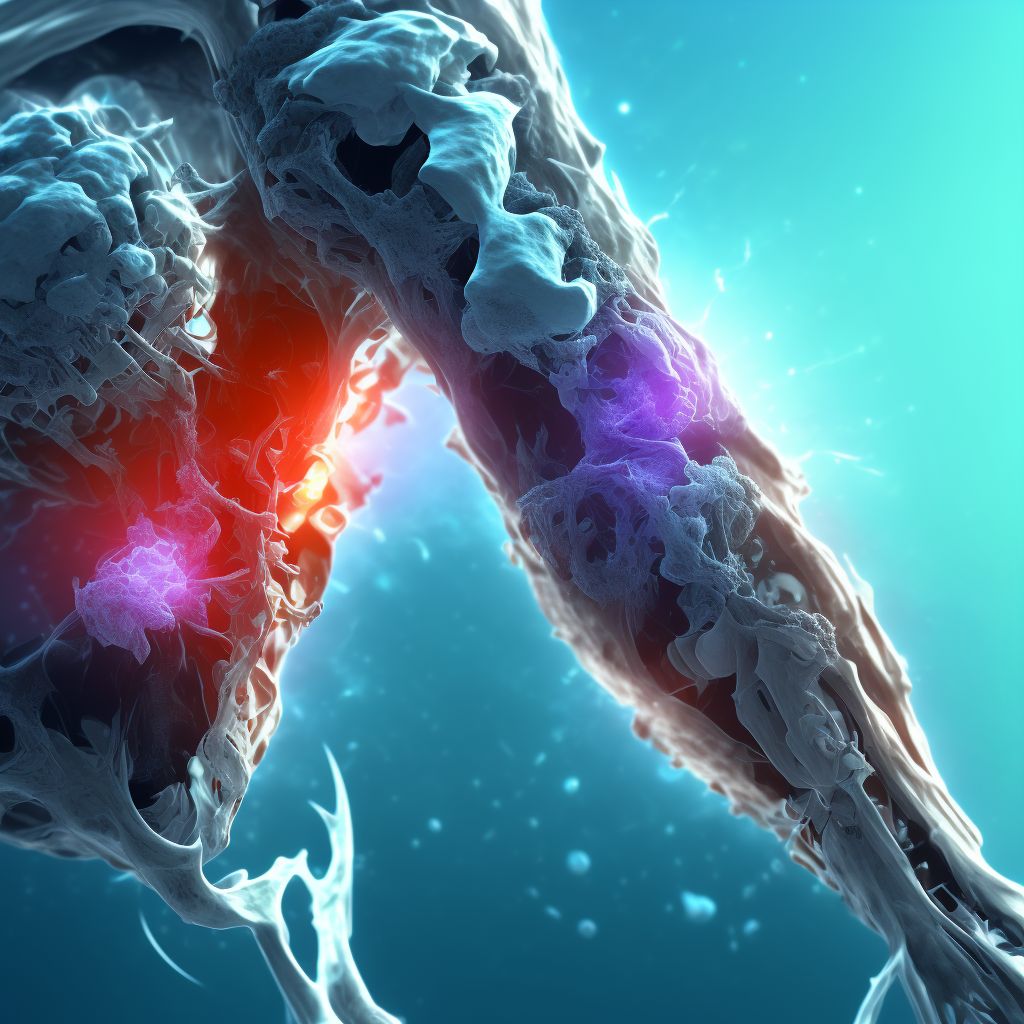
Displaced fracture of left tibial tuberosity, subsequent encounter for open fracture type I or II with malunion Save
ICD-10 code: S82.152Q
Disease category: S82.152: Displaced fracture of left tibial tuberosity
Displaced Fracture of Left Tibial Tuberosity: Understanding Open Fracture Type I or II with Malunion
A displaced fracture of the left tibial tuberosity can lead to significant pain, discomfort, and limited mobility. These fractures are often caused by high-energy trauma, such as a sports injury or a fall from a significant height. When left untreated or not properly managed, these fractures can result in malunion, which refers to the improper healing of the bone.
Open fractures, also known as compound fractures, occur when the fractured bone breaks through the skin. This exposes the bone to the external environment and increases the risk of infection. Open fractures are classified into various types based on the severity of the injury, with Type I or II indicating a less severe injury compared to Type III.
- Type I Open Fracture: In this type, the fracture is clean, with minimal soft tissue damage.
- Type II Open Fracture: This type involves a larger wound with moderate soft tissue damage but does not require extensive soft tissue coverage.
When a displaced fracture of the left tibial tuberosity results in malunion, it means that the bone has healed in an incorrect position. This can lead to several complications, including limited range of motion, chronic pain, and joint instability. It is crucial to identify and address malunions promptly to prevent long-term issues.
Diagnosing a displaced fracture of the left tibial tuberosity with subsequent open fracture Type I or II with malunion typically involves a thorough physical examination, X-rays, and possibly advanced imaging techniques like CT scans or MRI. These diagnostic tools help healthcare professionals evaluate the extent of the fracture, assess the malunion, and plan appropriate treatment strategies.
Proper management and treatment of these fractures are essential for optimal recovery and long-term outcomes. Treatment options may include surgical intervention, physical therapy, and the use of braces or casts to immobilize the affected area. However, it is important to consult with a healthcare professional for specific treatment recommendations.
In conclusion, a displaced fracture of the left tibial tuberosity, subsequent encounter for open fracture Type I or II with malunion, can have significant implications on a patient's quality of life. Understanding the nature of these fractures and seeking appropriate medical attention is vital for effective management and recovery.
Treatment of Displaced fracture of left tibial tuberosity, subsequent encounter for open fracture type I or II with malunion:
Treatment Options for Displaced Fracture of Left Tibial Tuberosity, Subsequent Encounter for Open Fracture Type I or II with Malunion
A displaced fracture of the left tibial tuberosity, subsequent encounter for open fracture type I or II with malunion can be a challenging condition to manage. However, with the right treatment approach, patients can experience significant improvemen...
To see full information about treatment please Sign up or Log in